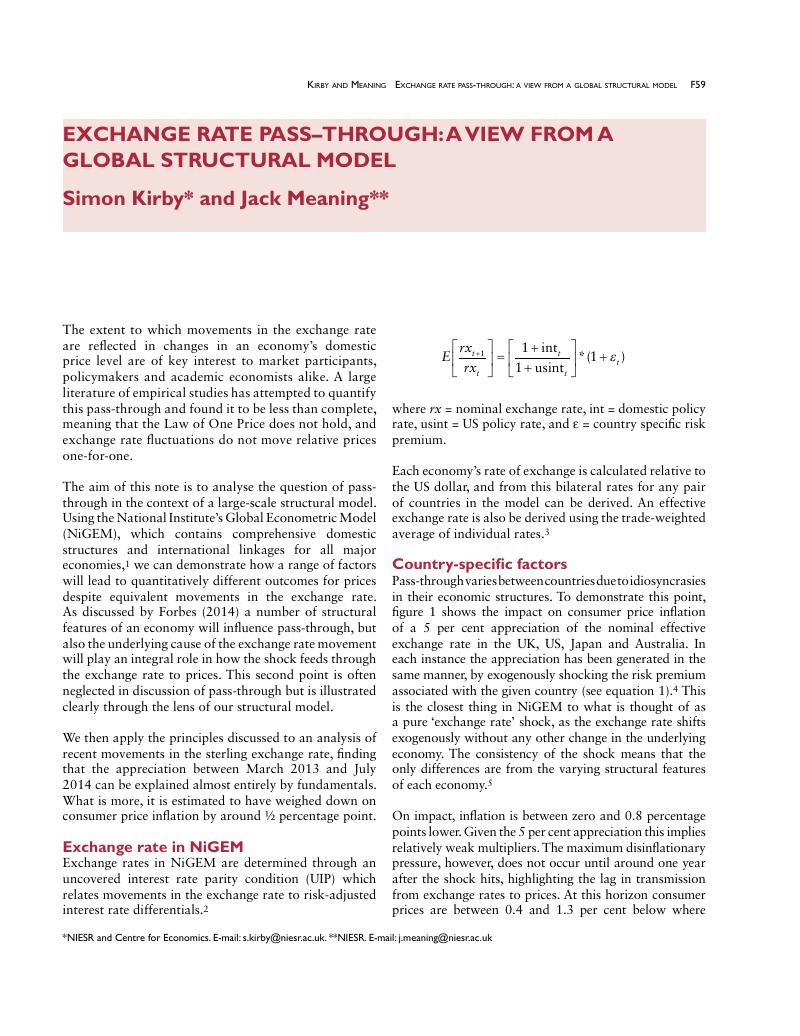Crossref Citations
This article has been cited by the following publications. This list is generated based on data provided by Crossref.
Kirby, Simon
Carreras, Oriol
Meaning, Jack
Piggott, Rebecca
and
Warren, James
2015.
Prospects for the UK economy.
National Institute Economic Review,
Vol. 232,
Issue. ,
p.
F48.
Kirby, Simon
Carreras, Oriol
Meaning, Jack
Piggott, Rebecca
and
Warren, James
2015.
Prospects for the UK economy.
National Institute Economic Review,
Vol. 233,
Issue. ,
p.
F53.
Kirby, Simon
and
Meaning, Jack
2015.
Oil Prices and Economic Activity.
National Institute Economic Review,
Vol. 231,
Issue. ,
p.
F43.
Kirby, Simon
Carreras, Oriol
Meaning, Jack
and
Piggott, Rebecca
2015.
Prospects for the UK Economy.
National Institute Economic Review,
Vol. 234,
Issue. ,
p.
F41.
Kirby, Simon
Carreras, Oriol
Meaning, Jack
Piggott, Rebecca
and
Warren, James
2016.
Prospects for the UK Economy.
National Institute Economic Review,
Vol. 238,
Issue. ,
p.
F46.
Forbes, Kristin
2016.
Much Ado about Something Important: How do Exchange Rate Movements Affect Inflation?.
The Manchester School,
Vol. 84,
Issue. S1,
p.
15.
2016.
Prospects for Individual Economies.
National Institute Economic Review,
Vol. 235,
Issue. ,
p.
F16.
Kirby, Simon
Carreras, Oriol
Meaning, Jack
and
Piggott, Rebecca
2016.
Prospects for the UK economy.
National Institute Economic Review,
Vol. 236,
Issue. ,
p.
82.
Kirby, Simon
Carreras, Oriol
Meaning, Jack
Piggott, Rebecca
and
Warren, James
2016.
Prospects for the UK Economy.
National Institute Economic Review,
Vol. 235,
Issue. ,
p.
F47.
Kirby, Simon
Carreras, Oriol
Piggott, Rebecca
and
Warren, James
2017.
Prospects for the UK Economy.
National Institute Economic Review,
Vol. 239,
Issue. ,
p.
F50.
Hacche, Graham
Carreras, Oriol
Kirby, Simon
Liadze, Iana
Piggott, Rebecca
and
Warren, James
2017.
World Overview.
National Institute Economic Review,
Vol. 239,
Issue. ,
p.
F10.
Kirby, Simon
Carreras, Oriol
Piggott, Rebecca
and
Warren, James
2017.
Prospects for the UK Economy.
National Institute Economic Review,
Vol. 240,
Issue. ,
p.
F14.
Haincourt, Sophie
2018.
International Macroeconomics in the Wake of the Global Financial Crisis.
Vol. 46,
Issue. ,
p.
233.
Forbes, Kristin
Hjortsoe, Ida
and
Nenova, Tsvetelina
2018.
The shocks matter: Improving our estimates of exchange rate pass-through.
Journal of International Economics,
Vol. 114,
Issue. ,
p.
255.
Nasir, Muhammad Ali
2020.
Forecasting inflation under uncertainty: The forgotten dog and the frisbee.
Technological Forecasting and Social Change,
Vol. 158,
Issue. ,
p.
120172.
Adelakun, Ojo J.
and
Ngalawa, Harold
2020.
Modelling exchange rate pass-through: A model of oil prices and asymmetric exchange rate fluctuations.
Journal of Economic and Financial Sciences,
Vol. 13,
Issue. 1,



